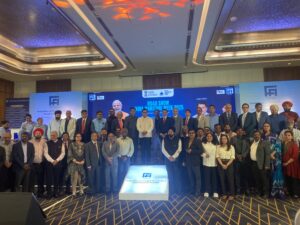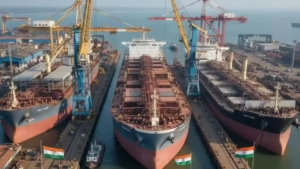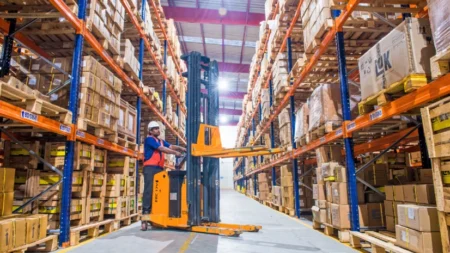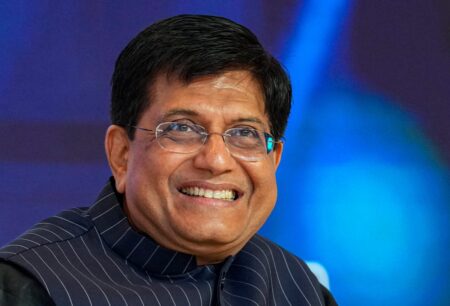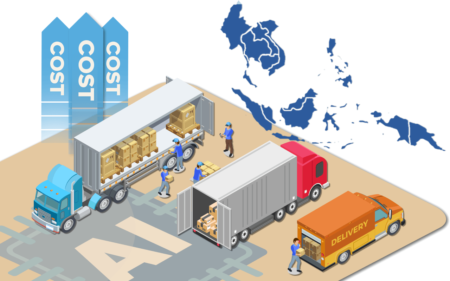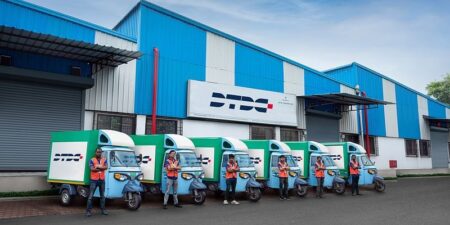Abhijeet Sinha outlines India’s path to transforming logistics from a cost burden to a strategic growth driver through smart corridors, digitalisation, and energy security, making it central to India’s $35–52 trillion vision by 2047.

For India, transforming logistics is no longer optional; it’s essential
Shifting the Gears
India’s logistics sector stands on the edge of a transformative leap. As the country eyes a $35–52 trillion economy by 2047, logistics must evolve from a cost-intensive operation to a growth catalyst. Abhijeet Sinha, Project Director, NHEV; Program Director, Ease of Doing Business, believes this shift demands the convergence of policy reform, sustainable infrastructure, global integration, and cutting-edge technology. The focus must now be on turning logistics into a force multiplier for trade and development.
The cost conundrum
Logistics accounts for 14% of India’s GDP, a glaring contrast to Japan, which reduced its costs to 5% over 25 years, unlocking unprecedented trade potential. Abhijeet believes India stands at a similar inflection point. Reducing logistics costs to around 9% would not only support our long-term goals but also make Indian goods more globally competitive. This especially benefits MSMEs, for whom every rupee saved is a doorway to global trade. The key lies in integrated, tech-enabled, multimodal solutions backed by digital and physical infrastructure.
Energy and Resilience
Expanding India’s strategic petroleum reserves from 70 to 90 days is not just about stockpiling; it’s about securing the fuel backbone of the logistics sector. A stable energy reserve offers predictability and shields the industry from oil price shocks. Abhijeet sees this as crucial for creating a cost-efficient and future-proof supply chain. Simultaneously, reducing reliance on imported fuel is a strategic necessity. Green highways and electrified freight corridors, some of which Abhijeet himself champions, are pivotal to decarbonising logistics and controlling long-term fuel expenses.
Fuel factor
India’s dependence on imported crude, over 80% of total needs, makes logistics vulnerable to price volatility. Moves like enabling petroleum imports at Adani’s Krishnapatnam Port are steps toward smarter refining and cost optimisation. These decisions ripple through the logistics value chain, ultimately improving export competitiveness. It’s a reminder that logistics isn’t just about moving goods; it’s tied to energy strategy, port operations, and global market access.
Smart moves ahead
India’s logistics future lies in innovation. The NHEV green highway pilot exemplifies this, where electric trucks charge on the go, reducing battery size and lowering costs. These roads could one day power hydrogen production using surplus renewable energy. On the digital front, replacing paperwork with automated, transparent systems transforms how MSMEs engage with global trade. It slashes delays, reduces costs, and levels the playing field.
Integrated vision
Reforms like the National Logistics Policy and Gati Shakti are reimagining infrastructure. Rail capacity, multimodal hubs, and clean-fuel vehicles are more than upgrades; they’re strategic imperatives. NITI Aayog estimates India can save ₹311 lakh crore in logistics fuel by 2050. These savings empower initiatives like Make in India and Aatmanirbhar Bharat, positioning the country as a regional logistics leader.
For India, transforming logistics is no longer optional; it’s essential. Through smart corridors, digital platforms, energy reforms, and visionary policy, logistics can emerge not just as a support system but as the spine of India’s economic journey toward global leadership.


